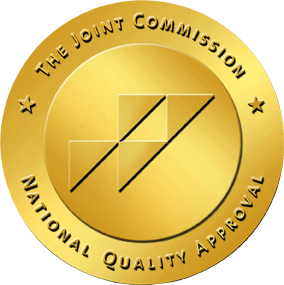Many of us may live through trauma at some point. All too common, it’s estimated that around 70% of people around the world will go through a potentially traumatic event during their lifetimes, according to the World Health Organization.
Traumatic events can take shape in many forms. It could be from surviving a natural disaster, a car accident, an act of violence, sexual assault and abuse, a life-threatening medical emergency, or even terrorism. Far-reaching, the effects of trauma may lend themselves to a host of mental health challenges: anxiety, depression, substance use disorder,s and more.
The Development of PTSD
In extreme trauma, some victims may develop PTSD, or Post Traumatic Stress Disorder, often seen in veterans who have suffered through the rigors of war. Although most severely distressing life experiences won’t turn into PTSD for most people, the U.S. Department of Veterans Affairs notes that about six out of every 100 people — 6% of the entire population — will develop PTSD.
Traditional talk therapies are highly effective in treating a wide range of disorders, but they can sometimes only go so far in treating PTSD or complex and chronic trauma. Eye Movement Desensitization and Reprocessing (EMDR) has emerged as an alternate, transformative therapy to help repair neural connections in your brain that were affected by trauma. EMDR therapy in Las Vegas is part of Vogue Recovery Center’s comprehensive treatment to help repair trauma and restore your sense of well-being.
What Is Eye Movement Desensitization and Reprocessing (EMDR)?
EMDR was developed in the late 1980s by American psychologist Francine Shapiro. While walking one day in the park, Shapiro realized that her own back-and-forth eye movements seemed to diminish and desensitize the intensity of negative emotions attached to her traumatic memories. The same effect was apparent when tested on others, but Shapiro realized that eye movements weren’t sufficiently therapeutic enough, so she incorporated other cognitive treatment elements, evolving into what is known as EMDR.
The philosophy of EMDR is that the mind can heal from mental trauma the same way the body can heal from a physical injury.
The EMDR Institute explains that the brain’s information processing system naturally wants to move to mental health, but a distressing or traumatic memory may block that from happening. Emotions you may experience during a traumatic event may be difficult to process, so there’s a tendency for them to get stuck or frozen. When you encounter danger or perceived danger, your body’s automatic survival defenses go into fight, flight, or freeze mode, flooding your central nervous system with hormones like adrenaline and cortisol that put your system on high alert.
Suppose someone could not fully process a traumatic situation when it was happening. In that case, they may experience the same trauma symptoms when future events remind them of that time and trigger negative emotions.
“Unlike other treatments that focus on directly altering the emotions, thoughts,s, and responses resulting from traumatic experiences, EMDR therapy focuses directly on the memory and is intended to change the way the memory is stored in the brain, thus reducing and eliminating the problematic symptoms,” notes the American Psychological Association.
If you’ve ever been in cognitive behavioral therapy (CBT), EMDR may seem familiar because talking your emotions through is a big factor. You’ll be asked by your therapist to think deeply, recall, and talk about any memories, emotions, or feelings attached to a traumatic event, plus the triggers that bring them to mind.
But in EMDR, there’s an added component — you’ll focus your gaze on the therapist’s finger as they move it back and forth in a rhythmic manner. This is called bilateral stimulation, a standardized procedure designed to reduce and release the anxiety attached to your traumatic emotions (desensitizing).
Like Shapiro discovered that day in the park, recalling a negative, traumatic experience in tandem with eye movements helps to reduce the vividness and emotion of the memory. As EMDR sessions progress, a patient may experience intense emotions as they recount their traumatic experience in more detail, but these distressing feelings start to lessen as bilateral brain activity is stimulated with eye movement guidance.
From there, you and your therapist can work to reprogram (or, in the EMDR acronym, reprocess) these negative memories at the surface with newer, more positive perspectives and beliefs.
What Mental Health Disorders Does EMDR Therapy Treat?
EMDR is a structured and research-based approach, which means it has been proven clinically effective more often than other methods at healing the adverse effects of mental health disorders. EMDR therapy in Nevada at Vogue works to address three distinct trauma disorders:
Trauma
The deep, lasting imprints that trauma can carve in our minds and bodies cannot be overstated. Because of their traumatic nature, our psyches do not properly address them as they remain buried and unresolved, often resurfacing through intrusive thoughts, emotional distress, or even behavioral symptoms, like avoidance of anything related to the experience (such as refusing to drive after being in a car accident). Trauma can also manifest itself through physical symptoms and place strain on our health, well-being, interpersonal relationships, and quality of life.
EMDR therapy in Las Vegas helps you get to the root of your trauma and other problems that may result from it. For instance, those struggling with substance abuse and past trauma may benefit from trauma-informed care, or TIC, a form of therapy that identifies and acknowledges the presence of trauma symptoms and the role they play in substance use and abuse. (Vogue also offers dual-diagnosis treatment for people who may suffer from more than one disorder.)
Post-Traumatic Stress Disorder
Statistics show an excellent success rate for PTSD treatment in Las Vegas through EMDR to treat PTSD. One study indicated that up to 90% of single-trauma victims’ PTSD was alleviated after three 90-minute EMDR sessions.
Many veterans pursuing veteran treatment in Las Vegas have found EMDR therapy to be beneficial. Combat PTSD can result in various symptoms, from flashbacks, nightmares, memory issues, hyperarousal, and mood and sleep disturbances. Another study found that through therapy such as PTSD treatment in Las Vegas, 77% of combat veterans were free of their PTSD in 12 sessions by addressing it in a safe, structured way — acknowledging that the events in their lives were real, embracing their collective impact and reframing the perception of them in a way that only EMDR therapy can.
Complex Trauma
Sometimes called complex post-traumatic stress disorder, or CPTSD, complex trauma manifests itself from prolonged, repeated, chronic exposure to harmful situations and is not the same as the short-term trauma of PTSD. Complex trauma has many potential causes, from long-term child physical or sexual abuse or domestic violence to being a victim of human or sex trafficking, according to the Cleveland Clinic. Over time, this can lead to persistent emotional wounds, such as feelings of shame, guilt, or mistrust, as well as difficulties in relationships and self-esteem.
EMDR therapy in Las Vegas, guided by a skilled and compassionate trauma therapist Las Vegas is particularly effective for complex trauma and CPTSD because it enables individuals to process these layered, interconnected memories in a gradual, manageable way — to replace negative self-beliefs with healthier, more constructive perspectives.
What Is EMDR Therapy in Las Vegas Like?
Trauma’s extended effects can last a lifetime iflefte unaddressed. If you’re considering EMDR therapy in Las Vegas, it’s a brave first step down the path of healing. You might wonder what the process involves or how long it may last.
The full breadth of EMDR therapy is divided into eight distinct phases per session.
Self-Assessment: Am I Addicted?
"*" indicates required fields
Contact Us
Ready to Get Help? Get in Touch Today.
"*" indicates required fields
The 8 Phases of EMDR Therapy
History and treatment planning
An intake session, phase 1, might be an initial consultation with your therapist or the first session following it. Here, they’ll gather as much information about your history as possible. They’ll ask you what brought you to therapy and identify and understand some problems and fears so that you can develop a treatment plan. The only caveat is that you won’t be asked to describe any traumatic experiences in detail since those will be addressed in future sessions.
Preparation
Self-care is part of the preparation phase of EMDR. Your therapist will teach you some specific coping mechanisms so you can better manage any emotional distress that may arise during EMDR sessions. They’ll also talk to you more about EMDR and what to expect.
Assessment
EMDR therapy begins in earnest. The assessment phase involves working with your therapist to identify specific memories you’ll target together during treatment. If it’s a single traumatic event, for example, they will ask you to describe a visual image that represents the traumatic event in question, a negative belief you’ve attached to the event, and a positive belief you’d like to believe in its place.
Once you’ve established these, the therapist will ask you, on a scale of 1–7, how strongly you feel them to be true. These ratings are part of what’s called the Validity of Cognition scale, or how valid you feel your beliefs to be (ranging from 1, Completely False, to 7, Completely True).
Desensitization
This is where the actual EMD (eye movement desensitization) begins. The therapist will ask you to focus on the traumatic memory while following their hand movements with your eyes. This process helps reduce the emotional charge of the memory.
Like the VOC scale, here, you’ll be asked to rate how disturbing the memory is on a 0–10 Subjective Units of Disturbance (SUD) scale — 0 being no disturbance, ten being the highest.
Installation
In phase one, you’ll work to strengthen the positive belief you identified in phase 3. Here, after more bilateral stimulation, you’ll be asked to rate how strongly you believe this new positive belief on the SUD scale. The higher the number, the stronger and more positive the belief. By phase 5, you work to “install” this new belief in place of the previous, more traumatic one.
Body scan
Trauma can also manifest itself in physical symptoms, so by phase 6, you’ll be asked to pay close attention to how you respond physically when recalling both the traumatic incident and the new, positive memory. What tension or distress do you notice, if any?
Closure
Like any mental health therapy, the goal for each session is to feel you’ve made some progress. At the end of each meeting with your therapist, they’ll guide you through some relaxation techniques to decompress from any uncomfortable emotions that may have surfaced. They’ll also review your coping techniques to help you manage any emotional distress that may arise between sessions.
Reevaluation
The final phase is the beginning of your next EMDR session. Your therapist will examine your psychological state, gauge if the last session’s treatment has proven beneficial, and gauge your overall progress to determine if further EMDR therapy sessions are needed.
While many people undergoing EMDR therapy begin to see results quickly, working with a trauma therapist in Las Vegas for the entire duration of the program ensures the most effective outcome. Stick with it! On average, patients require between six to twelve sessions, one to two times per week, for 60 to 90 minutes, but this can vary depending on the complexity of your trauma. Many people experience significant relief after just a few sessions, but others may need longer-term treatment.
Can an EMDR Therapist in Nevada Help Me?
Yes, EMDR therapy in Nevada at Vogueise is trained to help people understand and work through their trauma, whether it’s a single event you’d like to confront head-on or a more complex series of past events or possible PTSD.
Remember that more than 100,000 clinicians throughout the world successfully utilize EMDR therapy to help people from all walks of life conquer past traumas to live their best lives.
EMDR Therapy in Las Vegas at Vogue Recovery Center
EMDR therapy in Las Vegas is just one in a full spectrum of trauma and mental health modalities offered with compassion and care.
From the moment you enter our doors, you’ll have access to the support and care you need. In addiction recovery, the process begins with detoxification, where your physical withdrawal from substances is carefully medically supervised. After detox, you’ll transition into either a residential treatment program or an outpatient program, depending on your needs. Our range of therapeutic approaches includes CBT, dialectical behavior therapy (DBT), and family therapy.
EMDR in Las Vegas for Veterans and First Responders
For veterans, first responders, or anyone who has experienced trauma, veterans treatment in Las Vegas and other specialized programs — including those blending holistic care — integrate research-based care for patients with substance use disorders and co-occurring mental health disorders in home-like environments that are welcoming, accepting, and supportive.
You’re not alone in addressing the root causes of trauma and reprocessing it to reinvent yourself, emerging new and complete. Get started on your journey today.
Need Help?
It’s possible you need help with mental health or addiction. If you or a loved one are struggling, addiction treatment with dual diagnosis programming may be a good fit—contact Vogue Recovery Centers in Las Vegas and Phoenix. An admissions team member can help you decide if alcohol addiction treatment suits you.
Questions about treatment options?
Our admissions team is available 24/7 to listen to your story and help you get started with the next steps.
References
- Post-traumatic stress disorder
- History of EMDR – EMDR Institute – EYE MOVEMENT DESENSITIZATION AND REPROCESSING THERAPY
- EMDR Therapy for Trauma, PTSD, Anxiety, and Panic
- What is EMDR therapy and why is it used to treat PTSD?
- Understanding Veterans and PTSD | NVHS
- CPTSD (Complex PTSD): What It Is, Symptoms & Treatment
Paul Sisolak
Latest posts by Paul Sisolak (see all)
- How to Cope with Holiday Stress for a Joyful Season - November 18, 2025
- Who Offers Dual Diagnosis in Treatment Phoenix? - November 18, 2025









